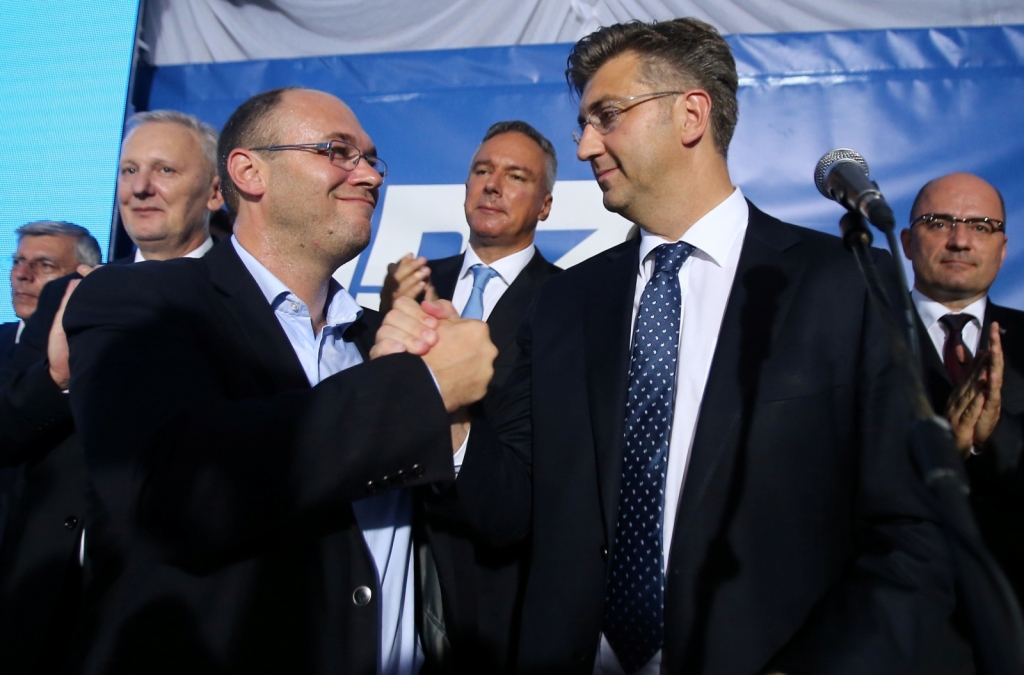-
Tips for becoming a good boxer - November 6, 2020
-
7 expert tips for making your hens night a memorable one - November 6, 2020
-
5 reasons to host your Christmas party on a cruise boat - November 6, 2020
-
What to do when you’re charged with a crime - November 6, 2020
-
Should you get one or multiple dogs? Here’s all you need to know - November 3, 2020
-
A Guide: How to Build Your Very Own Magic Mirror - February 14, 2019
-
Our Top Inspirational Baseball Stars - November 24, 2018
-
Five Tech Tools That Will Help You Turn Your Blog into a Business - November 24, 2018
-
How to Indulge on Vacation without Expanding Your Waist - November 9, 2018
-
5 Strategies for Businesses to Appeal to Today’s Increasingly Mobile-Crazed Customers - November 9, 2018
Left-leaning People’s Coalition in Croatia slightly in the lead
The MOST party, which was the third victor in last election held in November 2015, would get 12 seats and a small party Living Wall could make a new surprise with seven seats, six more than last time, the polls added. The first preliminary official results are expected around 10 pm (2000 GMT), but exit polls after the end of the vote may prove a good indicator. “We have shown that we have regained the trust of our voters”.
Advertisement
According to analysts, SDP’s leader Zoran Milanovic’s statements suggested that he would like to form a grand coalition with the HDZ. Milanovic expressed hope that the next Croatian government will be formed soon, saying that the instability of the past several months must not be repeated.
“We know that this [their party] program is not at all interesting to either the HDZ or SDP, and we know it is of no concern to MOST… therefore, our path is clear”, Ivan Vilibor Sincic, president of Living Wall, said.
The early elections happened after HDZ initiated a no-confidence vote in late June that led to the demise of Prime Minister Tihomir Oreskovic’s (pictured) government, after only five months in office.
Political deadlock has delayed reforms that are necessary for Croatia to catch up with the rest of the EU.
The previous HDZ-led coalition’s rule was marked by a growing climate of intolerance, including attacks on independent media and minorities, notably ethnic Serbs. The Social Democrats were in power for four years until last November.
The concern is that Most could set tough conditions that are hard for the other coalition partners to accept.
Neither the HDZ nor the SDP have shown great enthusiasm for the far-reaching reforms that analysts say would enhance the sluggish business environment and curtail debt in the longer term.
Croatians may have lost enthusiasm for voting a second time in less than a year – turnout was 52 percent, almost 10 points down from the November polls.
“Croatia needs a stable government, for the past months we had an unstable and destructive (one)”, he added. However, if either of the two major parties fails to form a government, another round of elections could also be a possible outcome of the vote.
Croatia has among the weakest economies in the EU.
Prolonged turmoil would complicate efforts by any cabinet that emerges to address Croatia’s substantial public debt burden and follow through on an economic program to nurture the economy after a six-year recession wiped out more than a tenth of gross domestic product.
Zagreb resident Jelena Micic said she was hopeful things would improve.
Advertisement
“I think we have succeeded in introducing a new culture of communication and dialogue in this campaign, bringing the content back to politics, basing the campaign on the program”.





























